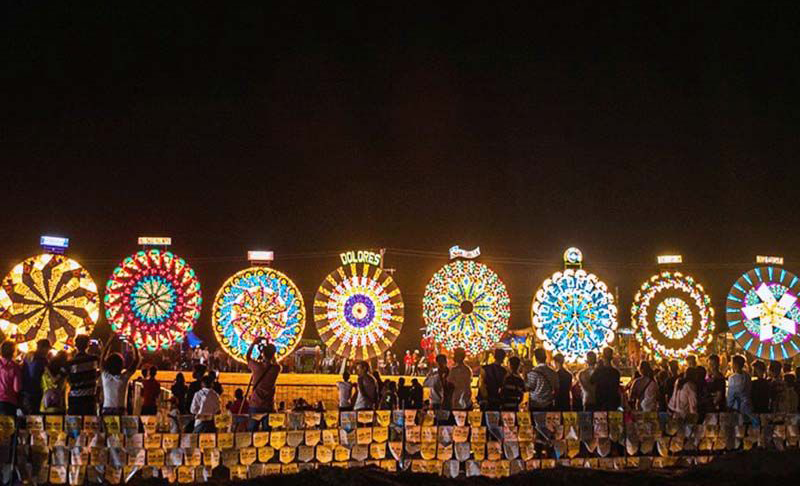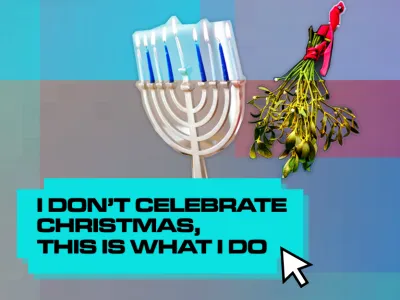
Festive Traditions Around The World
Include this article in your Skills Builder Journal. It could help you develop... 

The festive season is great for so many reasons. Good food, good music, good people, loads of joy...and loads of different traditions that take place around the world. How many of these have you heard of? Do you celebrate any of them?
The Yule Goat
In Sweden, this symbol of Christmas dates back to ancient pagan festivals. But it wasn’t until 1966 that the Yule Goat got a new life, when the idea to make a giant straw goat was thought up. According to the official website, the now annual goat takes 1000 hours to make, is more than 42 feet high, 23 feet wide, and weighs 514 stone! The Yule Goat is constructed in the same spot every year and even has a live webcam stream from the day it’s put up to the day it’s taken down so people all around the world can see. Amazing!
The Giant Lantern Festival
The Philippines knows how to put on a show over Christmas, when the city of San Fernando holds Ligligan Parul, or, the Giant Lantern Festival. The lanterns, known as parols, symbolise the Star of Bethlehem, and each parol consists of thousands of spinning lights that illuminate the night sky. The festival has made San Fernando known as the "Christmas Capital of the Philippines."

Kurisumasu ni wa kentakkii
In Japan, Christmas isn’t a national holiday, but people still celebrate together, just not around the table with a roast turkey. Instead most families will head out to their local KFC for some chicken. The tradition started in 1974 thanks to a campaign that went viral (IRL!) called “Kurisumasu ni wa kentakkii”, or, "Kentucky for Christmas!" It’s been popular ever since, so much so that some people order their boxes months in advance or queue up for two hours at a time to make sure they get their food!
13 Yule Lads
First a goat and now some lads! Similar to the idea of the 12 Days of Christmas, children in Iceland are visited by 13 Yule Lads for the 13 nights before Christmas. Children must place their shoes by the window before going to bed, and in the morning they’ll look in their shoes to either find some sweets, if they’ve been good, or rotten potatoes if they’ve been bad!
The Krampus
In a similar vein to Iceland, children in Austria are also visited before Christmas by a creature called Krampus. The scary, almost devil-like creature, is based on Alpine folklore from old pre-Christian myths involving beasts from the forest and creatures such as satyrs. The Krampus became linked with St Nicholas in the Middle Ages, and is said to come to children in Austria on 6 December to ask for a list of their good and bad deeds. Good children are rewarded with sweets, apples and nuts, whereas bad children would get punished by getting hit with a stick. Ouch!

Get Grilling
In New Zealand, the festive season actually falls in summer. So, most traditions centre around a barbecue or outside grill, where families will get together under the sun for a big cookout of fresh seafood, meat and veg and sing carols in both English and Maori. The New Zealand Christmas tree is the Pohutukawa, a coastal species that blooms a bright-red color in December!
Christmas cookout
While the traditions around South Africa vary by region and culture, most families come together for a cookout, called braaing on the holiday. Marinated steaks and boerewors sausages serve as the main course, followed by a customary dessert of malva pudding - a caramelised, sweet, spongy pudding that is drenched in a creamy sauce and served alongside a custard. Traditional fir Christmas trees are decorated with a variety of baubles including hand-beaded African ornaments.
Missa Do Galo
Christmas Eve for Brazilian and Portuguese families means coming together to eat a late dinner, and then, at exactly midnight, exchanging gifts, toasts, and wishes for a Merry Christmas. Midnight mass, or Missa Do Galo, is a chance to meet up with neighbours and extended family to wish them well for the holiday season. The service is often followed by fireworks in the town square. Lovely!
Oplatek
On Christmas Eve in Poland, many families share oplatek, which is an unleavened religious wafer. Each person takes it in turn to break off a piece as they wish each other Merry Christmas. Dinner may not begin until the first star appears in the night sky and, traditionally, an extra setting is left at the table should someone show up uninvited.
Carols and kutya
In Ukraine, Christmas Day is observed by Orthodox Christians on 7 January, when they dress in traditional clothing and walk through the town singing carols. Kutya, a meal made of cooked wheat mixed with honey, ground poppy seeds and sometimes nuts, is a popular Christmas Eve treat, and some families even throw spoonfuls of it at the ceiling - if it sticks, there will be a good harvest in the new year!



